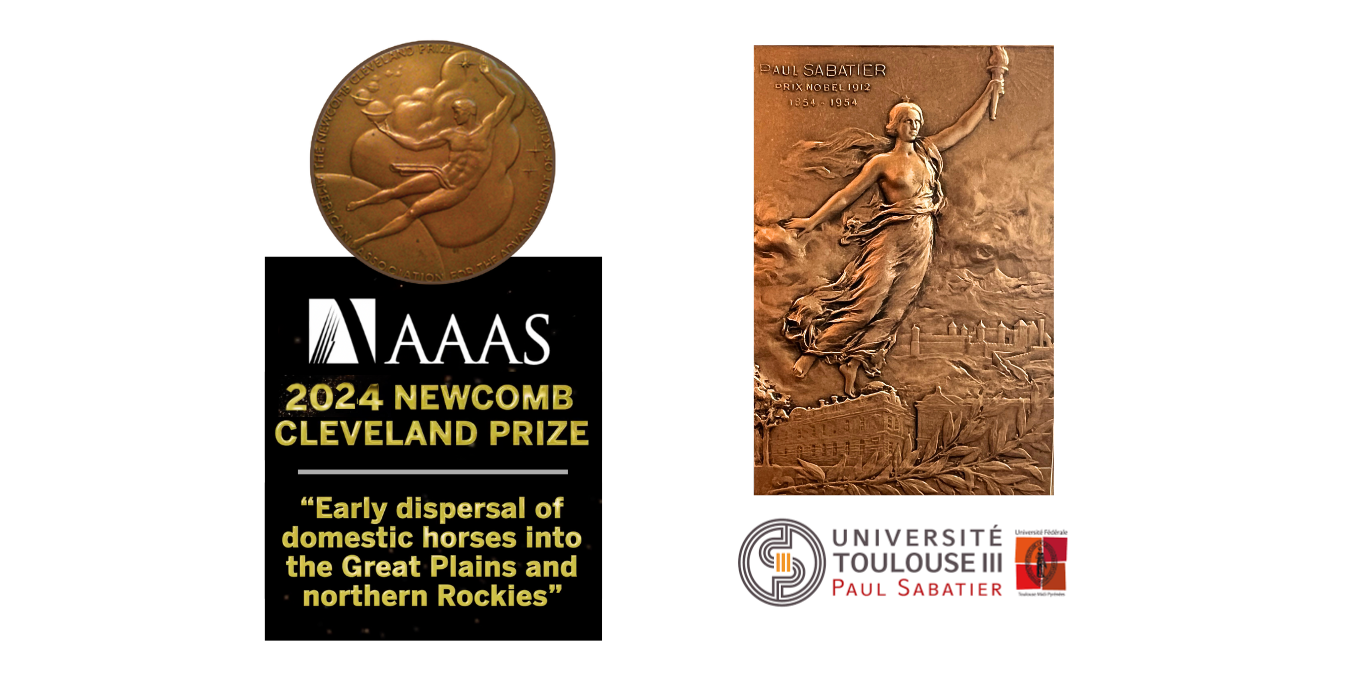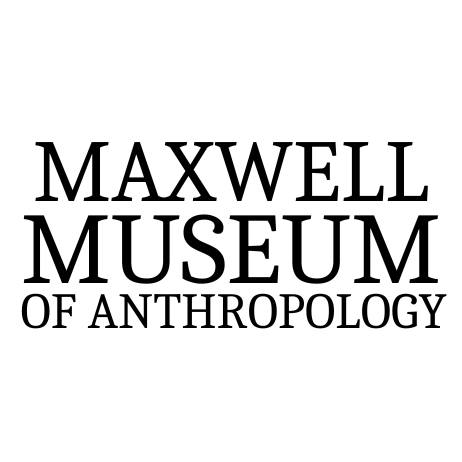Publications
Abstract: Climate affects habitat, food availability, and the movement and sustainability of all life. In this work, we apply Indigenous and Western scientific methods, including genomics and isotope profiling, on fossils from across Beringia to explore the effect of climate change on horses. We find that Late Pleistocene horses from Alaska and northern Yukon are related to populations from Eurasia and crossed the Bering land bridge multiple times during the last glacial interval. We also find deeply divergent lineages north and south of the American ice sheets that genetically influenced populations across Beringia and into Eurasia. As climate warmed and horses entered the ice-free corridor connecting Beringia and midcontinental America, restricted mobility and food availability impeded population growth. Our combined Western and Indigenous framework offers critical guidance for wildlife conservation amid ongoing climate change.
By: Yvette Running Horse Collin (Tašunke Iyanke Wiŋ) 1, 2, 3*, Clément P. Bataille 4, 5*, Samantha Hershauer 6, Mila Hunska Tašunke Icu (Chief Joe American Horse) 2, 3, (Akil Nujipi) Chief Harold Left Heron 2, 3, Wilson Justin 7, 8, 9, Jane (qwyxnmitkw) Stelkia 10, C’wyelx (Thomas Pierre) 11, James Aaron Stelkia 12, Sean Asikłuk Topkok 13, Beth Ginondidoy Leonard 14, 15, Beatle (Naatoonistaahs) Soop 16, Mario Gonzalez (Nantan Hinapan) 2, 3, Anpetu Luta Wiŋ (Antonia Loretta Afraid of Bear-Cook) 2, 3, Wakiŋyala Wiŋ (Anita Afraid of Bear) 2, 3 ,Tanka Omniya (Robert Milo Yellow Hair) 2, 3, Barbara Dull Knife (Mah’piya Keyaké Wiŋ) 2, 3, Mažasu (Wendell W. Yellow Bull) 2, 3, Bill Means 2, 3, Cruz Tecumseh Collin (Wanka’tuya Kiya) 2, 3, Michael Koskey 12, Joshua D. Kapp 17, Zoe Landry 4, Danielle Fraser 18, 19, 20, John Southon 21, Eve E. Lindroos 4, Auguste Hassler 4, 22, Lorelei Chauvey 1, Gaetan Tressières 1, Laure Tonasso-Calvière 1, Stéphanie Schiavinato 1, Andaine Seguin-Orlando 1, Aude Perdereau 23, Pedro H. Oliveira 24, Jean-Marc Aury 24, Patrick Wincker 24, Irina V. Kirillova 25, Sergey K. Vasiliev 26, Mariya A. Kusliy 1, 27, Alexander S. Graphodatsky 27, Alexey A. Tishkin 28, Ian Barnes 29, Pat Druckenmiller 30, 31, Christopher N. Jass 32, Ross D. E. MacPhee 33, Christina I. Barrón-Ortiz 32, Pam Groves 34, Dan Mann 33, Duane G. Froese 35, Matthew Wooller 36, Joshua H. Miller 20, 37, Brooke Crowley 37, 38, Grant Zazula 39, Elizabeth Hall 39, Susan Hewitson 39, Beth Shapiro 17*, Ludovic Orlando 1*
Abstract: The horse is central to many Indigenous cultures across the American Southwest and the Great Plains. However, when and how horses were first integrated into Indigenous lifeways remain contentious, with extant models derived largely from colonial records. We conducted an interdisciplinary study of an assemblage of historic archaeological horse remains, integrating genomic, isotopic, radiocarbon, and paleopathological evidence. Archaeological and modern North American horses show strong Iberian genetic affinities, with later influx from British sources, but no Viking proximity. Horses rapidly spread from the south into the northern Rockies and central plains by the first half of the 17th century CE, likely through Indigenous exchange networks. They were deeply integrated into Indigenous societies before the arrival of 18th-century European observers, as reflected in herd management, ceremonial practices, and culture.
By: William Timothy Treal Taylor, Pablo Librado, Chief Joseph American Horse, Carlton Shield Chief Gover, Jimmy Arterberry, Antonia Loretta Afraid of Bear-Cook, Harold Left Heron, Robert Milo Yellow Hair, Mario Gonzalez, Bill Means, Sam High Crane, Wendell W. Yellow Bull, Barbara Dull Knife, Anita Afraid of Bear, Cruz Tecumseh Collin, Chance Ward, Theresa A Pasqual, Lorelei Chauvey, Laure Tonasso-Calviere, Stéphanie Schiavinato, Andaine Seguin-Orlando, Antoine Fages, Naveed Khan, Clio Der Sarkissian, Xuexue Liu, Stefanie Wagner, Beth Ginondidoy Leonard, Bruce L Manzano, Nancy O’Malley, Jennifer A Leonard, Eloísa Bernáldez-Sánchez, Eric Barrey, Léa Charliquart, Emilie Robbe, Thibault Denoblet, Kristian Gregersen, Alisa O Vershinina, Jaco Weinstock, Petra Rajić Šikanjić, Marjan Mashkour, Irina Shingiray, Jean-Marc Aury, Aude Perdereau, Saleh Alquraishi, Ahmed H Alfarhan, Khaled A S Al-Rasheid, Tajana Trbojević Vukičević, Marcel Buric, Eberhard Sauer, Mary Lucas, Joan Brenner-Coltrain, John R Bozell, Cassidee A Thornhill, Victoria Monagle, Angela Perri 43, Cody Newton, W Eugene Hall, Joshua L Conver, Petrus Le Roux, Sasha G Buckser, Caroline Gabe, Juan Bautista Belardi, Christina I Barrón-Ortiz, Isaac A Hart, Christina Ryder, Matthew Sponheimer, Beth Shapiro, John Southon, Joss Hibbs, Charlotte Faulkner, Alan Outram, Laura Patterson Rosa, Katelyn Palermo, Marina Solé, Alice William, Wayne McCrory, Gabriella Lindgren, Samantha Brooks, Camille Eché, Cécile Donnadieu, Olivier Bouchez, Patrick Wincker, Gregory Hodgins, Sarah Trabert, Brandi Bethke, Patrick Roberts, Emily Lena Jones, Yvette Running Horse Collin, Ludovic Orlando
Abstract: Lakota science and scientific systems were communally developed over thousands of years with sustainability, alignment and ecological balance as the goals. Lakota knowledge keepers, traditional leaders and scholars offer an introduction to Lakota scientific systems, principles and protocols to stimulate a much needed dialogue between Indigenous scientists and the mainstream scientific, economic and political communities. As is customary protocol-wise, the Lakota always follow Šungwakaŋ, the Horse Nation. Here, the Lakota provide narrative correction with regard to their relationship with Šungwakaŋ, their history, sciences, perspectives, scientific systems, and clarification regarding their sacred commitment to protect Unči Maka (Grandmother Earth) and all life. A case is made for the birthing of a new, truly collaborative era for Science that is based upon equality and mutual respect, fully embracing the contributions and concepts of unique scientific systems. With climate change upon us, the world can no longer afford to have Indigenous scientific systems suppressed or their voices actively ignored and silenced within science and academia. There is only one Earth, and she is calling out for us to come together for the protection of all life. Mitakuye Oyasiŋ.
Aiyačiŋ: Lakota ehankihan woyake. Tanka ki lechel oyakapi yelo. Taku škaŋ škaŋ, petawan shahigni na taku škaŋ škaŋ iglush ake. Hetan o uwo nunpa ichage. Taku wakaŋ wa a upelo. Tatanka oyate ki a upelo, winyaŋ wan oha a upelo. Šungwakaŋ oyate ki a upelo. Čanupa wan oha a upelo. Wamakaskan sitomniya a upelo. Wičo ichage hechupelo. Anpo wi omakiyayo. Wiyoyanpa takiya, itokaga takiya, wimaheliye takiya. Waziya takiya, mahpiya takiya na unči maka anagopta yunke. Očoka wan yuha el luta ke ki. Wičoni wan yuha manitelo. Wowableze waste luhaktelo. Čante t’izan na wowan unsila, čante oyagnaki yelo. Anpetu wanjin sunkaka wanjin unsinilaki. Waste ki he e yelo. Mitakuye Oyasiŋ.
Keywords: Lakota Science, climate change, sustainability, scientific collaboration, Indigenous, traditional knowledge, Horse Nation, historical narrative correction, Unči Maka (Grandmother Earth), origin theories, Pte Oyate, Očeti Sakowiŋ, Skaŋ, Mitakuye Oyasiŋ, protection of life.
By: Mila Hunska Tašunke Icu (Joseph American Horse), Anpetu Luta Wiŋ (Antonia Loretta Afraid of Bear-Cook), Akil Nujipi (Harold Left Heron), Tanka Omniya (Robert Milo Yellow Hair), Mario Gonzalez (Nantan Hinapan), Bill Means, Sam High Crane (Wapageya Mani), Mažasu (Wendell W. Yellow Bull), Barbara Dull Knife (Mah’piya Keyaké Wiŋ), Wakinyala Wiŋ (Anita Afraid of Bear), and Yvette Running Horse Collin (Tašunke Iyanke Wiŋ).
Powered by Taku Skan Skan Wasakliyapi, Global Institute for Traditional Sciences © 2025. All rights reserved.








